Julia Di
CoinFT: A Coin-Sized, Capacitive 6-Axis Force Torque Sensor for Robotic Applications
Mar 25, 2025Abstract:We introduce CoinFT, a capacitive 6-axis force/torque (F/T) sensor that is compact, light, low-cost, and robust with an average mean-squared error of 0.11N for force and 0.84mNm for moment when the input ranges from 0~10N and 0~4N in normal and shear directions, respectively. CoinFT is a stack of two rigid PCBs with comb-shaped electrodes connected by an array of silicone rubber pillars. The microcontroller interrogates the electrodes in different subsets in order to enhance sensitivity for measuring 6-axis F/T. The combination of desirable features of CoinFT enables various contact-rich robot interactions at a scale, across different embodiment domains including drones, robot end-effectors, and wearable haptic devices. We demonstrate the utility of CoinFT on drones by performing an attitude-based force control to perform tasks that require careful contact force modulation. The design, fabrication, and firmware of CoinFT are open-sourced at https://hojung-choi.github.io/coinft.github.io/.
Locomotion as Manipulation with ReachBot
Jul 01, 2024Abstract:Caves and lava tubes on the Moon and Mars are sites of geological and astrobiological interest but consist of terrain that is inaccessible with traditional robot locomotion. To support the exploration of these sites, we present ReachBot, a robot that uses extendable booms as appendages to manipulate itself with respect to irregular rock surfaces. The booms terminate in grippers equipped with microspines and provide ReachBot with a large workspace, allowing it to achieve force closure in enclosed spaces such as the walls of a lava tube. To propel ReachBot, we present a contact-before-motion planner for non-gaited legged locomotion that utilizes internal force control, similar to a multi-fingered hand, to keep its long, slender booms in tension. Motion planning also depends on finding and executing secure grips on rock features. We use a Monte Carlo simulation to inform gripper design and predict grasp strength and variability. Additionally, we use a two-step perception system to identify possible grasp locations. To validate our approach and mechanisms under realistic conditions, we deployed a single ReachBot arm and gripper in a lava tube in the Mojave Desert. The field test confirmed that ReachBot will find many targets for secure grasps with the proposed kinematic design.
Martian Exploration of Lava Tubes (MELT) with ReachBot: Scientific Investigation and Concept of Operations
Jun 19, 2024



Abstract:As natural access points to the subsurface, lava tubes and other caves have become premier targets of planetary missions for astrobiological analyses. Few existing robotic paradigms, however, are able to explore such challenging environments. ReachBot is a robot that enables navigation in planetary caves by using extendable and retractable limbs to locomote. This paper outlines the potential science return and mission operations for a notional mission that deploys ReachBot to a martian lava tube. In this work, the motivating science goals and science traceability matrix are provided to guide payload selection. A Concept of Operations (ConOps) is also developed for ReachBot, providing a framework for deployment and activities on Mars, analyzing mission risks, and developing mitigation strategies
ReachBot Field Tests in a Mojave Desert Lava Tube as a Martian Analog
May 23, 2024



Abstract:ReachBot is a robot concept for the planetary exploration of caves and lava tubes, which are often inaccessible with traditional robot locomotion methods. It uses extendable booms as appendages, with grippers mounted at the end, to grasp irregular rock surfaces and traverse these difficult terrains. We have built a partial ReachBot prototype consisting of a single boom and gripper, mounted on a tripod. We present the details on the design and field test of this partial ReachBot prototype in a lava tube in the Mojave Desert. The technical requirements of the field testing, implementation details, and grasp performance results are discussed. The planning and preparation of the field test and lessons learned are also given.
Using Fiber Optic Bundles to Miniaturize Vision-Based Tactile Sensors
Mar 12, 2024



Abstract:Vision-based tactile sensors have recently become popular due to their combination of low cost, very high spatial resolution, and ease of integration using widely available miniature cameras. The associated field of view and focal length, however, are difficult to package in a human-sized finger. In this paper we employ optical fiber bundles to achieve a form factor that, at 15 mm diameter, is smaller than an average human fingertip. The electronics and camera are also located remotely, further reducing package size. The sensor achieves a spatial resolution of 0.22 mm and a minimum force resolution 5 mN for normal and shear contact forces. With these attributes, the DIGIT Pinki sensor is suitable for applications such as robotic and teleoperated digital palpation. We demonstrate its utility for palpation of the prostate gland and show that it can achieve clinically relevant discrimination of prostate stiffness for phantom and ex vivo tissue.
Detecting Grasping Sites in a Martian Lava Tube: Multi-Stage Perception Trade Study for ReachBo
Dec 14, 2023Abstract:This paper presents a trade study analysis to design and evaluate the perception system architecture for ReachBot. ReachBot is a novel robotic concept that uses grippers at the end of deployable booms for navigation of rough terrain such as walls of caves and lava tubes. Previous studies on ReachBot have discussed the overall robot design, placement and number of deployable booms, and gripper mechanism design; however, analysis of the perception and sensing system remains underdeveloped. Because ReachBot can extend and interact with terrain over long distances on the order of several meters, a robust perception and sensing strategy is crucial to identify grasping locations and enable fully autonomous operation. This trade study focuses on developing the perception trade space and realizing such perception capabilities for a physical prototype. This work includes analysis of: (1) multiple-range sensing strategies for ReachBot, (2) sensor technologies for subsurface climbing robotics, (3) criteria for sensor evaluation, (4) positions and modalities of sensors on ReachBot, and (5) map representations of grasping locations. From our analysis, we identify the overall perception strategy and hardware configuration for a fully-instrumented case study mission to a Martian lava tube, and identify specific sensors for a hardware prototype. The final result of our trade study is a system design conducive to benchtop testing and prototype hardware development.
Unsupervised Change Detection for Space Habitats Using 3D Point Clouds
Dec 04, 2023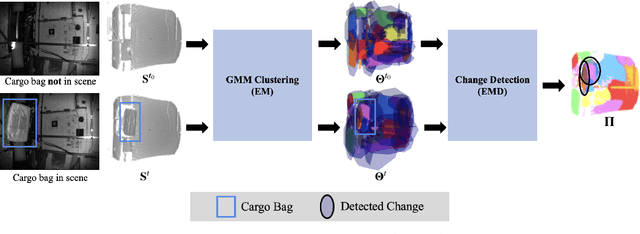

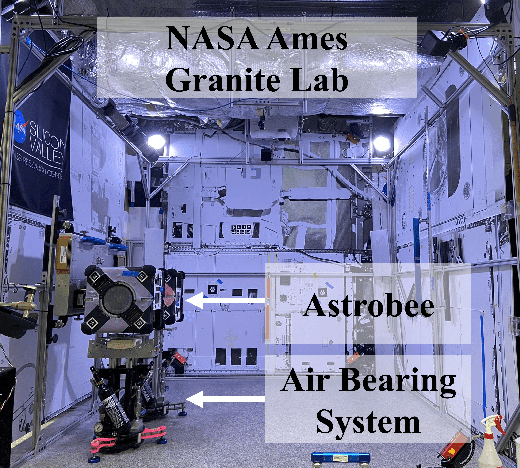

Abstract:This work presents an algorithm for scene change detection from point clouds to enable autonomous robotic caretaking in future space habitats. Autonomous robotic systems will help maintain future deep-space habitats, such as the Gateway space station, which will be uncrewed for extended periods. Existing scene analysis software used on the International Space Station (ISS) relies on manually-labeled images for detecting changes. In contrast, the algorithm presented in this work uses raw, unlabeled point clouds as inputs. The algorithm first applies modified Expectation-Maximization Gaussian Mixture Model (GMM) clustering to two input point clouds. It then performs change detection by comparing the GMMs using the Earth Mover's Distance. The algorithm is validated quantitatively and qualitatively using a test dataset collected by an Astrobee robot in the NASA Ames Granite Lab comprising single frame depth images taken directly by Astrobee and full-scene reconstructed maps built with RGB-D and pose data from Astrobee. The runtimes of the approach are also analyzed in depth. The source code is publicly released to promote further development.
Multi-Agent 3D Map Reconstruction and Change Detection in Microgravity with Free-Flying Robots
Nov 05, 2023Abstract:Assistive free-flyer robots autonomously caring for future crewed outposts -- such as NASA's Astrobee robots on the International Space Station (ISS) -- must be able to detect day-to-day interior changes to track inventory, detect and diagnose faults, and monitor the outpost status. This work presents a framework for multi-agent cooperative mapping and change detection to enable robotic maintenance of space outposts. One agent is used to reconstruct a 3D model of the environment from sequences of images and corresponding depth information. Another agent is used to periodically scan the environment for inconsistencies against the 3D model. Change detection is validated after completing the surveys using real image and pose data collected by Astrobee robots in a ground testing environment and from microgravity aboard the ISS. This work outlines the objectives, requirements, and algorithmic modules for the multi-agent reconstruction system, including recommendations for its use by assistive free-flyers aboard future microgravity outposts.
Projected Task-Specific Layers for Multi-Task Reinforcement Learning
Sep 15, 2023
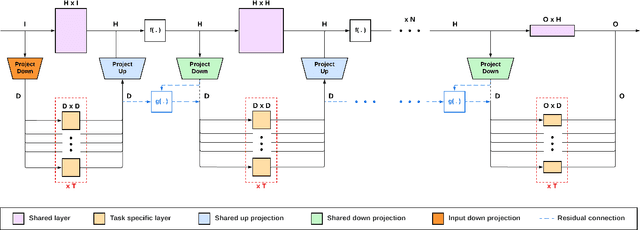
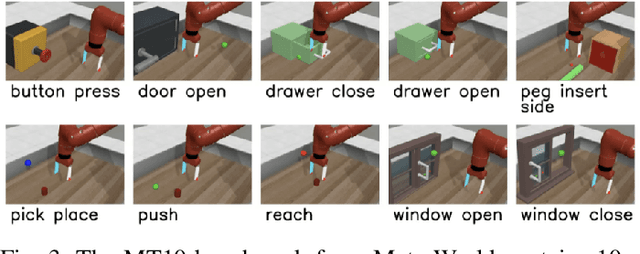

Abstract:Multi-task reinforcement learning could enable robots to scale across a wide variety of manipulation tasks in homes and workplaces. However, generalizing from one task to another and mitigating negative task interference still remains a challenge. Addressing this challenge by successfully sharing information across tasks will depend on how well the structure underlying the tasks is captured. In this work, we introduce our new architecture, Projected Task-Specific Layers (PTSL), that leverages a common policy with dense task-specific corrections through task-specific layers to better express shared and variable task information. We then show that our model outperforms the state of the art on the MT10 and MT50 benchmarks of Meta-World consisting of 10 and 50 goal-conditioned tasks for a Sawyer arm.
A Skeleton-based Approach For Rock Crack Detection Towards A Climbing Robot Application
Sep 10, 2023
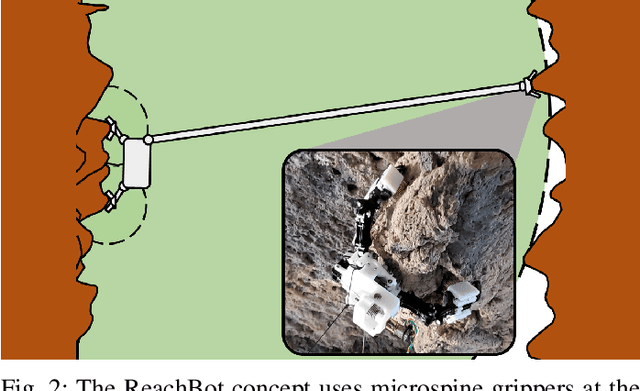
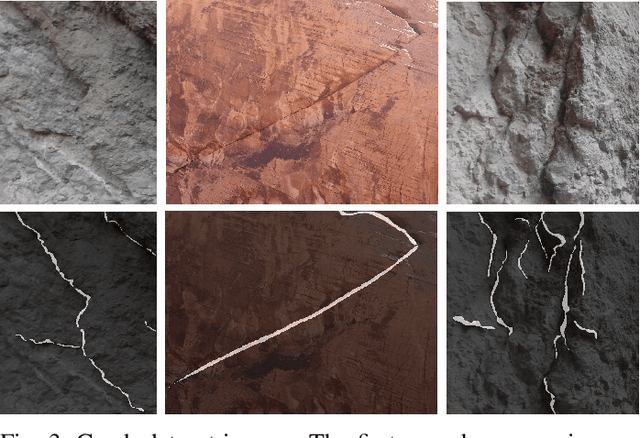
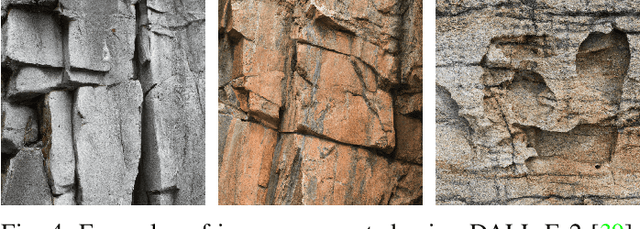
Abstract:Conventional wheeled robots are unable to traverse scientifically interesting, but dangerous, cave environments. Multi-limbed climbing robot designs, such as ReachBot, are able to grasp irregular surface features and execute climbing motions to overcome obstacles, given suitable grasp locations. To support grasp site identification, we present a method for detecting rock cracks and edges, the SKeleton Intersection Loss (SKIL). SKIL is a loss designed for thin object segmentation that leverages the skeleton of the label. A dataset of rock face images was collected, manually annotated, and augmented with generated data. A new group of metrics, LineAcc, has been proposed for thin object segmentation such that the impact of the object width on the score is minimized. In addition, the metric is less sensitive to translation which can often lead to a score of zero when computing classical metrics such as Dice on thin objects. Our fine-tuned models outperform previous methods on similar thin object segmentation tasks such as blood vessel segmentation and show promise for integration onto a robotic system.
 Add to Chrome
Add to Chrome Add to Firefox
Add to Firefox Add to Edge
Add to Edge